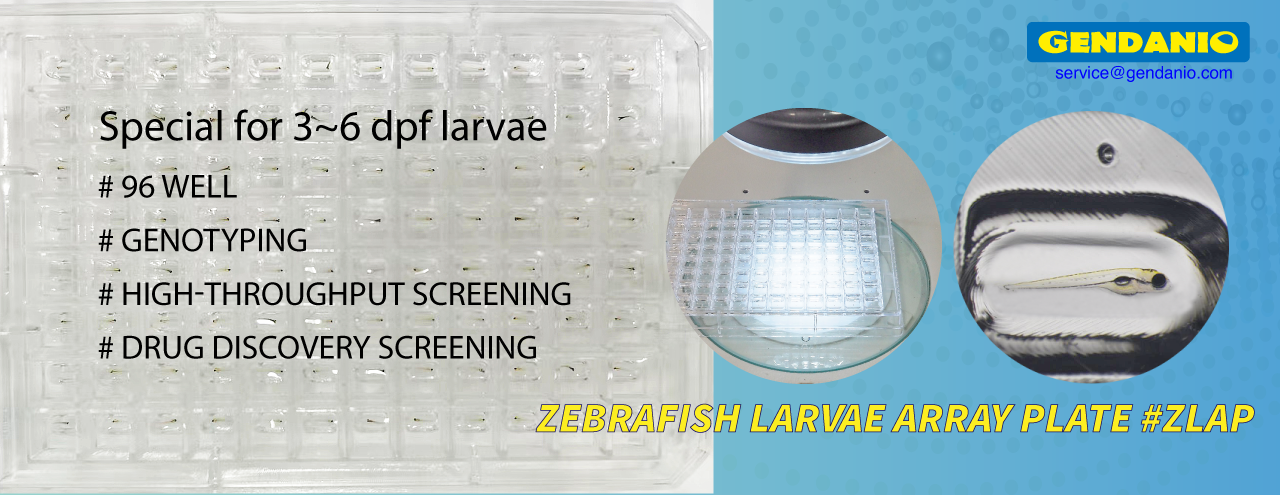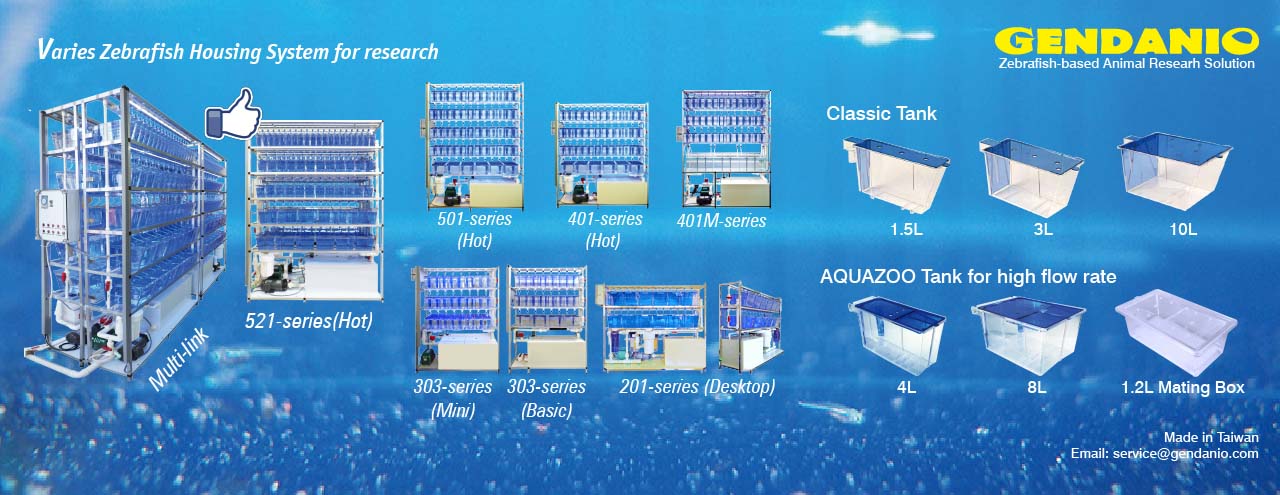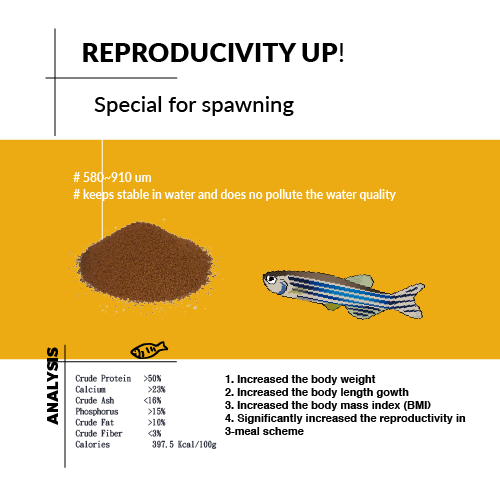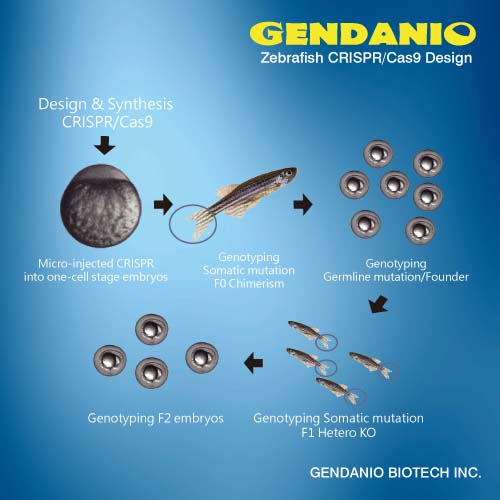Zebrafish have emerged as powerful model organisms to decipher in vivo complex interactions ranging from normal development to human diseases such as cancer, inflammatory disorders, and heart disease.
These small freshwater tropical fish normally live in the waters of India, Pakistan, and Bhutan, but now are increasingly found in research labs across the world. Not only are they genetically similar to humans, but their biochemistry and organ systems parallel ours. Because they reproduce so quickly and have many offspring, they also offer a model for high-throughput screening of drug compounds.
The European Zebrafish meeting, held recently in Edinburgh, Scotland, provided an update on current challenges and emerging solutions in this fast growing area. New research included the live imaging of nerve myelination, how immune cells regulate the cytoskeleton, and developing technologies to use zebrafish larvae for high-throughput screening.
“Zebrafish have a number of attractive features,” noted Rebecca Jones, a Ph.D. student in the lab of professor Paul Martin, department of biochemistry, school of medical sciences, University of Bristol. “They are easy to breed and produce up to 250 eggs per mating. The larvae are transparent and allow a variety of fantastic live-imaging capabilities unparalleled in other vertebrate organisms.”
Jones is studying how key cytoskeletal regulators impact immune cell behavior. “Although initially employed for developmental studies, zebrafish have recently become a tool for studying the immune system, which begins developing in the young embryo. For us, they can be used as a model to better understand the molecular and cellular mechanisms of immune cells such as macrophages and neutrophils. Another advantage of the zebrafish model is that we can create and screen genetic mutants that have links to human immune system diseases.”
Zebrafish can help in better understanding Wiskott-Aldrich syndrome, a potentially fatal human immunodeficiency disorder characterized by recurrent infections, autoimmunity, and excessive bleeding. Little is known about what causes immune cells to malfunction in vivo.
“Patients express dysfunctional variants of the Wiskott-Aldrich syndrome protein (WASp), a hematopoietically restricted regulator of the actin cytoskeleton. Although much is known about the biochemistry of WASp and the in vitro restricted mobility of WASp-defective cells, in vivo studies have proved to be much more challenging. We are studying the in vivo effects of key WASp mutations on immune cell functions using live imaging of zebrafish larvae.”
Jones said they have developed a mutant in which zebrafish WASp1 has been inactivated. “This mutant model allows us to better study the importance of this protein on immune cell function in vivo. Further, we can use transgenic cell lineage markers, such as a green-fluorescent protein (GFP) label in neutrophils, to live image the cell migration in vivo, for instance toward a wound site using widefield and confocal microscopy.
“Zebrafish genetic techniques then allow us to express human WASp within our model and access the degree of rescue of the mutant phenotype. We are currently analyzing a graded range of human WASp mutants to determine more precisely how each affects immune cell function. Ultimately, this will help us better understand how human mutations result in disease.”
CNS In Vivo Model
The coating of nerve fibers with myelin (i.e., myelination) is an essential requirement for the proper functioning of the vertebrate nervous system. In humans, myelin production begins in the fourteenth week of life and continues thereafter. Similar to electrical insulation, myelin coats, protects, and thus aids the electrical transmission of axons.
In the central nervous system, myelin is produced by specialized cells called oligodendrocytes that wrap their cell membranes around axons. In demyelinating illnesses, such as multiple sclerosis, faulty oligodendrocytes may be the chief culprits underlying the disease process. However, most of the cellular and molecular mechanisms governing myelination remain largely obscure.
Tim Czopka, Ph.D., post-doctoral fellow in the Center for Regenerative Medicine, Center for Neuroregeneration at the University of Edinburgh, and colleagues are utilizing zebrafish as vertebrate models for studying myelin regulation. “It is very difficult to study the dynamics of myelination in vivo in mammals. We have learned most of what we know from tissue culture systems or mouse models.
“Zebrafish offer an attractive alternative. They begin producing myelin already as two-day-old embryos. At this stage they are optically transparent, which allows us to track the dynamics of myelinating cells in vivo and in real time without the need for surgical intervention.”
To visualize the process, Dr. Czopka expresses GFP under the control of myelin-specific promoters. “We have generated a suite of transgenic reagents that allows us to express genes of interest in specific neurons and oligodendrocytes. We can follow the developing embryo and study cellular dynamics during myelination at high resolution using time-lapse confocal microscopy. Since axons differ in size and not all axons are myelinated simultaneously, we wanted to understand how myelination is regulated.”
Dr. Czopka and colleagues found that the largest axon is myelinated first. “Our studies determined that there is a developmental gradient in which the larger axons are myelinated first. Furthermore, the interaction between the oligodendrocytes and axon is an important regulatory step for myelin production. This also suggests that there must be a very active exchange of signals that govern this interaction. In the future, we plan to use forward genetic screens to discover the genes that regulate this process.”
Overall, Dr. Czopka says, these zebrafish systems represent a powerful approach to obtain novel insights into the in vivo mechanisms of myelination.
Imaging Live-Cell Response in Real Time
Understanding the molecular mechanisms behind how cells remodel in response to mechanical stimulation is essential to develop therapies for many vascular diseases. Studies of how intracellular structures respond to mechanochemical stimulation have traditionally relied on post-stimulation cell fixation and staining experiments. Because this method offers only static information, researchers are now investigating the dynamics of fluorescently tagged proteins using the latest low-light cameras.
An ideal experiment would mechanically stimulate and image live cells in real time. However, the technical requirements of optical microscopy and mechanical stimulation techniques were conflicted. To solve this issue, Andreea Trache, Ph.D., assistant professor at Texas A&M Health Science Center, designed an integrated microscopy system that can simultaneously stimulate and image live cell response in real time.
This integrated system uses an atomic force microscope (AFM) tip coated with fibronectin to mechanically stimulate the cortical actin fibers beneath the apical cell surface. Simultaneously, the mechanical-induced cytoskeletal reorganization throughout the cell is captured at high spatial and temporal resolution by either total internal reflection fluorescence (TIRF) microscopy or fast spinning disk (FSD) confocal microscopy.
This setup is challenging because it's hypersensitive to noise and vibrations, therefore, Dr. Trache needed to isolate any vibration sources from the AFM and specimen while minimizing the intensity of the laser excitation. Critical, too, was a high signal-to-noise ratio to record dim fluorescence images with a dark background in order to minimize post-processing of hard data.
Dr. Trache used a pair of QuantEM™ EMCCD cameras from Photometrics® for TIRF and FSD confocal microscopy because of its superior synchronization between the spinning disk and the camera. Thus, mounting the confocal scanner on a silicone damper pad and isolating it from the microscope body methodically isolated all vibration sources.
Earlier, researchers only looked at mechanotransduction as a before and after event. Now, Dr. Trache obtains consistent data from studying real-time live cell remodeling. The result is a 3-D capture of whole-cell adaptive responses to mechanical stimulation
Engineers at MIT have developed a new technique that provides high-throughput manipulation, imaging, surgery, and screening of whole vertebrates (zebrafish) to study various human diseases and injuries at cellular resolution and in vivo. [Mehmet Fatih Yanik]
High-Throughput In Vivo Screening
Many physiological processes cannot be replicated in vitro and require use of animal models such as zebrafish. Visualizing zebrafish organs often requires physically manipulating larvae for proper orientation in a viscous medium such as agar. This has been a major impediment to the development of high-throughput zebrafish screening assays.
Engineers at Massachusetts Institute of Technology have developed a new technique that can analyze larvae in seconds. “We flow embryos through our instrumentation by loading them from reservoirs to an imaging platform where they are automatically rotated to the optimal position for imaging. The animals are unharmed by the process,” explained Mehmet Fatih Yanik, Ph.D., associate professor of electrical engineering and computer science.
With a resolution that is high enough to visualize individual cells inside various organs, the entire process takes less than 10 seconds per animal, compared to about 10 minutes for manual manipulation. “We are able to perform drug screens with our own chemical libraries for several diseases.
“In Parkinson disease, specific dopamine neurons in the brain are lost. We have a toxin model that kills the same cells that deteriorate in the human brain due to the disease process. We are screening for drugs that protect cells. This is very exciting work because it is the first time a large-scale chemical screen can be done on a vertebrate model. We hope to provide leads that may be of therapeutic value.”
Dr. Yanik's team is also studying epilepsy as well as spinal wound repair. “For our epilepsy studies, we induce seizures and then look for chemicals that modulate the hyperactivity. Additionally, we employ high-throughput surgery for our studies of wound repair. In this case, lasers are utilized to induce spinal cord injury. This allows us to screen potential compounds for enhancing nerve regeneration.”
When high-throughput screening is coupled with imaging, serious data overload can occur. “This is a big issue and one that we are currently addressing. Typical runs can generate up to 1 gigabyte of data per minute. We are developing algorithms to allow us to crunch the data more efficiently, such as how to automatically detect and identify different organs and count remaining neurons after compound treatment.”
Other scientists may soon be able to benefit from Dr. Yanik's approach. He is planning to commercialize the technology. “Because it is a high-throughput vertebrate screening platform with the capability of cellular-resolution imaging and manipulation, we anticipate it will be used for large-scale in vivo studies of many different types of diseases. We look forward to making it available to the entire research community.”
Imaging Challenges
Successful imaging requires overcoming three key challenges, notes Stuart Logan, imaging specialist at PerkinElmer, who helped conduct an imaging workshop at the conference.
“The first challenge is dealing with live specimens, where phototoxicity issues can have damaging effects on the organism. Short wavelengths may cause DNA damage. Exposure to fluorescent light may also cause damage through heating. Other concerns are photobleaching (due to the signal rapidly fading under illumination) and the ability to detect low level fluorescence. Finally, because living systems are dynamic, the speed of capture must be fast enough to capture biological changes.”
A second challenge relates to the amount of data generated. “When running long time-lapse experiments, one generates huge volumes of data. It is common to generate greater than 30 gigabytes of data for a single experiment.”
Analyzing the data presents the third major challenge to successful imaging. “Image analysis requires accuracy, reliability, and comparability of statistical information. Software must be able to automatically generate quantitative results for comparison and publication from a large body of image files. Further, because there may be many different users, the software needs to be highly intuitive and easy to use.”
Claire Stewart, associate product manager, described PerkinElmer's approach to solving these issues. “For live-cell imaging, we offer our UltraVIEW® VoX 3D system. It is the only 3-D spinning disk system for acquisition to analysis. Spinning disk microscopy features rotating disks that bear thousands of pinholes on their surfaces. This allows simultaneous collection of multiple data points. One can use a lower dose of laser light because there is faster tracking of the sample. This technology, controlled by software designed for imaging of live specimens, allows capture and storage of images at a very high frame rate minimizing phototoxicity and photobleaching.”
For reliable, statistically unbiased analysis of large numbers of images, particularly from high-content imaging systems, the company suggests the Columbus™ Image Data Management and Analysis System. “Multiple users can easily store, access, and evaluate their data. Further, data can be accessed, evaluated, and measured using a web browser.”
For a more in-depth analysis, PerkinElmer offers Volocity® 3D Image Analysis Software. “To truly understand the biology of your samples, you need to view and evaluate data in 3-D,” Stewart reported. “Only then can you obtain a more complete understanding of the complex interactions that occur among cellular structures.”
Zebrafish live-cell microscopy is gaining in popularity as a model system because it can provide unmatched views of the inner complexity and workings at the resolution of the cell. As further improvements in the instrumentation and ability to analyze complex data occur, researchers will continue to develop more insights into the complex living processes from the single-cell level to functions within the entire organism.


























